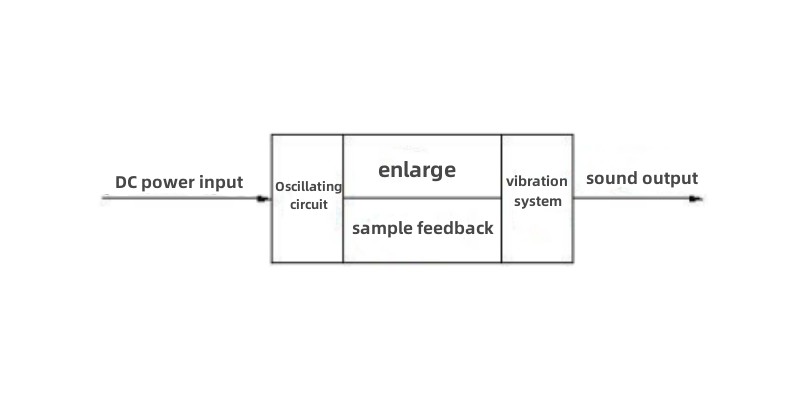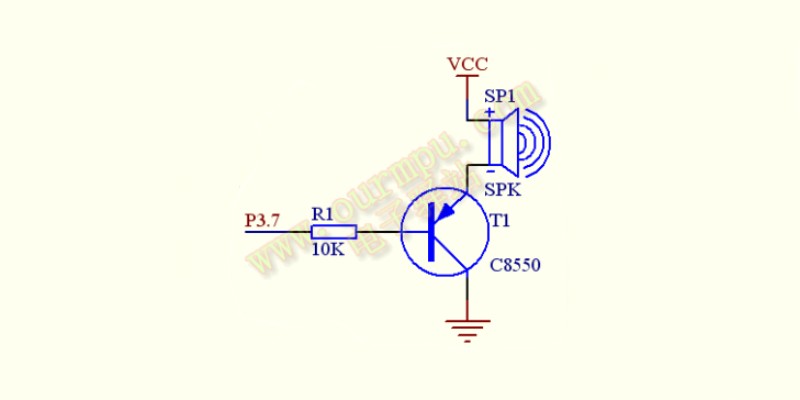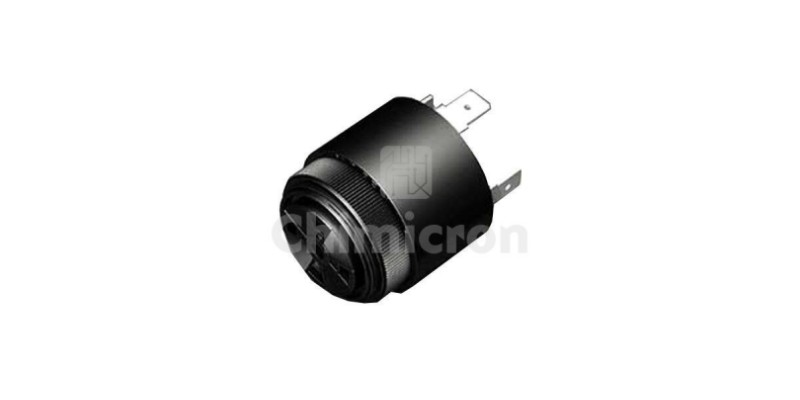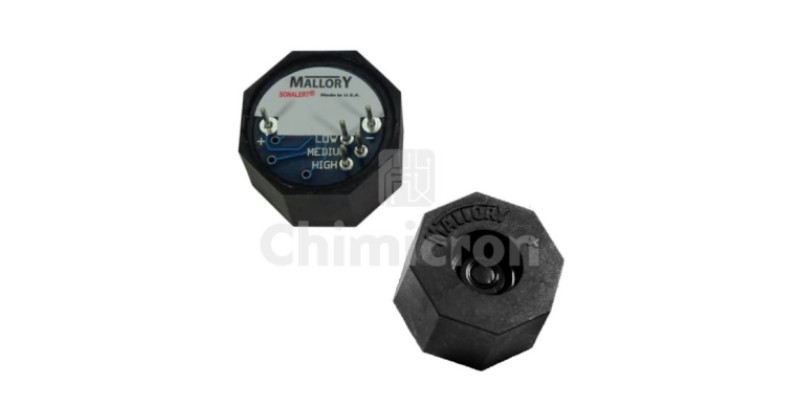The buzzer is a sounding device that can convert audio signals into sound signals. It is widely used in household appliances, alarm systems of banks and public security, electronic toys and game machines.
what is buzzer
Buzzer The buzzer is an electronic sounder with an integrated structure. It is powered by DC voltage and is widely used in computers, printers, copiers, alarms, electronic toys, automotive electronic equipment, telephones, timers and other electronic products. As a sound device. Buzzers are mainly divided into two types: piezoelectric buzzers and electromagnetic buzzers. The buzzer is represented by the letter "H" or "HA" in the circuit (the old standard uses "FM", "ZZG", "LB", "JD", etc.).
Classification of buzzers
1. According to the principle of its driving method, it can be divided into: active buzzer (including drive circuit) and passive buzzer (external drive);
2. According to the different structure, it can be divided into: electromagnetic buzzer and piezoelectric buzzer;
3. According to different packages, it can be divided into: DIP BUZZER (pin buzzer) and SMD BUZZER (chip buzzer);
4. According to different currents, it can be divided into: DC buzzer and AC buzzer. Among them, the most common piezoelectric buzzer is DC, which uses piezoelectric materials, that is, when the piezoelectric material is subjected to external force Piezoelectric materials generate charges when deformed. Likewise, piezoelectric materials deform when an electric current is applied.
The electromagnetic buzzer mainly utilizes the characteristic that the energized conductor will generate a magnetic field, and uses a fixed permanent magnet and the energized conductor to generate magnetic force to push the tympanic membrane fixed on the coil.
Because the sounding principles of the two buzzers are different, the piezoelectric structure is simple and durable, and is suitable for devices such as alarms. The electromagnetic type is mostly used in language, music and other equipment because of its good timbre.
Electromagnetic buzzer
The electromagnetic buzzer is a component that uses the action of the electromagnetic coil on the buzzer to produce sound. It is divided into two types: active and passive. The active buzzer can sound when it is connected to DC, and the passive buzzer needs to be controlled. The signal realizes the generation of sound.
piezoelectric buzzer
The piezoelectric buzzer uses the piezoelectric effect of the piezoelectric ceramic to drive the vibration of the metal sheet to make a sound. Compared with the electromagnetic buzzer, the sound is higher and the current consumption is smaller.
Structural principle of buzzer
1. Piezoelectric buzzer Piezoelectric buzzer is mainly composed of multivibrator, piezoelectric buzzer, impedance matching device, resonance box, shell and so on. Some piezoelectric buzzer housings are also equipped with light-emitting diodes.
Multivibrators are built from transistors or integrated circuits. When the power is turned on (1.5~15V DC working voltage), the multivibrator starts to oscillate and outputs an audio signal of 100~500HZ, and the impedance matching device pushes the piezoelectric buzzer to sound.
The piezoelectric buzzer is made of lead zirconate titanate or lead magnesium niobate piezoelectric ceramic material. Silver electrodes are plated on both sides of the ceramic sheet, and after polarization and aging treatment, they are bonded together with brass or stainless steel sheets.
2. Electromagnetic buzzer Electromagnetic buzzer is composed of oscillator, electromagnetic coil, magnet, vibrating diaphragm and shell.
After the power is turned on, the audio signal current generated by the oscillator passes through the electromagnetic coil, causing the electromagnetic coil to generate a magnetic field. Under the interaction of the electromagnetic coil and the magnet, the vibrating diaphragm periodically vibrates and produces sound.
Working principle diagram of buzzer
The sounding principle of the buzzer is composed of a vibration device and a resonance device, and the buzzer is divided into a passive self-excited type and an active self-excited type.
The working and sounding principle of the passive separately excited buzzer is: the square wave signal is input into the resonance device and converted into the sound signal output, and the working and sounding principle diagram of the passive separately excited buzzer
The working and sounding principle of the self-excited buzzer is: the DC power input passes through the amplified sampling circuit of the oscillation system to generate a sound signal under the action of the resonant device, and the working and sounding principle diagram of the self-excited buzzer
Buzzer Drive Principle
The sounding principle of the buzzer is that the current passes through the electromagnetic coil, so that the electromagnetic coil generates a magnetic field to drive the vibrating membrane to sound, so a certain current is required to drive it.
The current output by the IO pin of the single-chip microcomputer is small, and the TTL level output by the single-chip microcomputer is basically The buzzer cannot be driven, so a current amplification circuit needs to be added. The S51 enhanced single-chip microcomputer experiment board uses a triode C8550 to amplify and drive the buzzer. See the schematic diagram below

As shown in the figure, the positive pole of the buzzer is connected to the VCC (+5V) power supply, the negative pole of the buzzer is connected to the emitter E of the triode, and the base level B of the triode is led by P3.7 of the single-chip microcomputer after passing through the current limiting resistor R1.
Foot control, when P3.7 outputs a high level, the triode T1 is cut off, no current flows through the coil, and the buzzer does not sound; when P3.7 outputs a low level, the triode is turned on, so that the current of the buzzer forms a loop, Make noise. Therefore, we can control the level of the P3.7 pin through the program to make the buzzer sound and turn off.

The function of the buzzer
The buzzer is mainly used for prompting or alarming. According to different designs and uses, it can emit various sounds such as music, siren, buzzer, alarm, and electric bell.
Buzzers are also widely used in our lives. For example, the buzzers used in washing machines often emit buzzing sounds to remind users of the operation process; The user sends out an alarm that the burning appliance is dry; the buzzer used as a doorbell usually emits the sound of "ding dong" or music to indicate the sound of a visitor; most buzzers are installed in public security, banks, and home warning areas. If someone enters the warning area, the buzzer will sound an alarm under the action of sensor control; the buzzer used in factories, schools, etc., often emits electric bells.
How to Choose a Buzzer?
While choosing a buzzer or speaker, many principles need to consider like the following.
There are many types and specifications of buzzers, you need to know several parameters (voltage, current, driving mode, size, connection/fixing mode), and of course, more importantly, the desired sound (sound pressure, frequency).
Working voltage: Electromagnetic buzzer, from 1.5 to 24V, piezoelectric buzzer from 3V to 220V is feasible, but the general piezoelectric buzzer is recommended to have a voltage above 9V to obtain a louder sound.
Current consumption: The electromagnetic type depends on the voltage, ranging from tens to hundreds of milliamperes. The piezoelectric type saves more power. It can operate normally with a few milliamperes, and when the buzzer starts, it will instantly consumes about three times as much current,Drive mode: Both kinds of buzzers are self-excited, as long as they are connected to direct current (DC), they can sound, because the drive circuit has been built in the buzzer, because of the different action principles, the electromagnetic buzzer The device should be driven by a 1/2 square wave, and the piezo should be driven by a square wave to have a better sound output.
Size: The size of the buzzer will affect the size of the volume and frequency. The minimum of the electromagnetic type is from 7mm to the maximum of 25mm, and the piezoelectric type is from 12mm to 50mm or larger.
Connection method: Generally, there are pins (DIP), welding wire (Wire), patch (SMD), piezoelectric large ones and locking screws.
Sound pressure: The buzzer is often tested at a distance of 10cm. If the distance is doubled, the attenuation will be about 6dB. On the contrary, if the distance is doubled, it will increase by 6dB. The electromagnetic buzzer can reach the level of 85dB / 10cm , the piezoelectric type can be made very loud, and most common alarms are made of piezoelectric buzzers.
Advantages
The advantages of a buzzer include the following.
Simply Compatible
Frequency Response is Good
Size is small
Energy Consumption is less
The Range of Voltage usage is Large
Sound Pressure is high
Disadvantages
The disadvantages of the buzzer include the following.
Controlling is a little hard
Generates Annoying Sound
Training is necessary to know how to repair the condition without just turning off.
Application field
The buzzer is an electronic buzzer with an integrated structure, which belongs to a kind of electronic components. It is powered by DC voltage or AC voltage. It is widely used in the computer industry (main board buzzer, chassis buzzer, computer buzzer device) printer (control panel buzzer), copier, alarm industry (alarm buzzer, alarm buzzer), electronic toys (music buzzer), agriculture, automotive electronic equipment industry (vehicle buzzer, reversing Buzzer, car buzzer, motorcycle buzzer) telephone (environmental protection buzzer), timer, air conditioner, medical equipment and other electro-acoustic industries. environmental monitoring.


